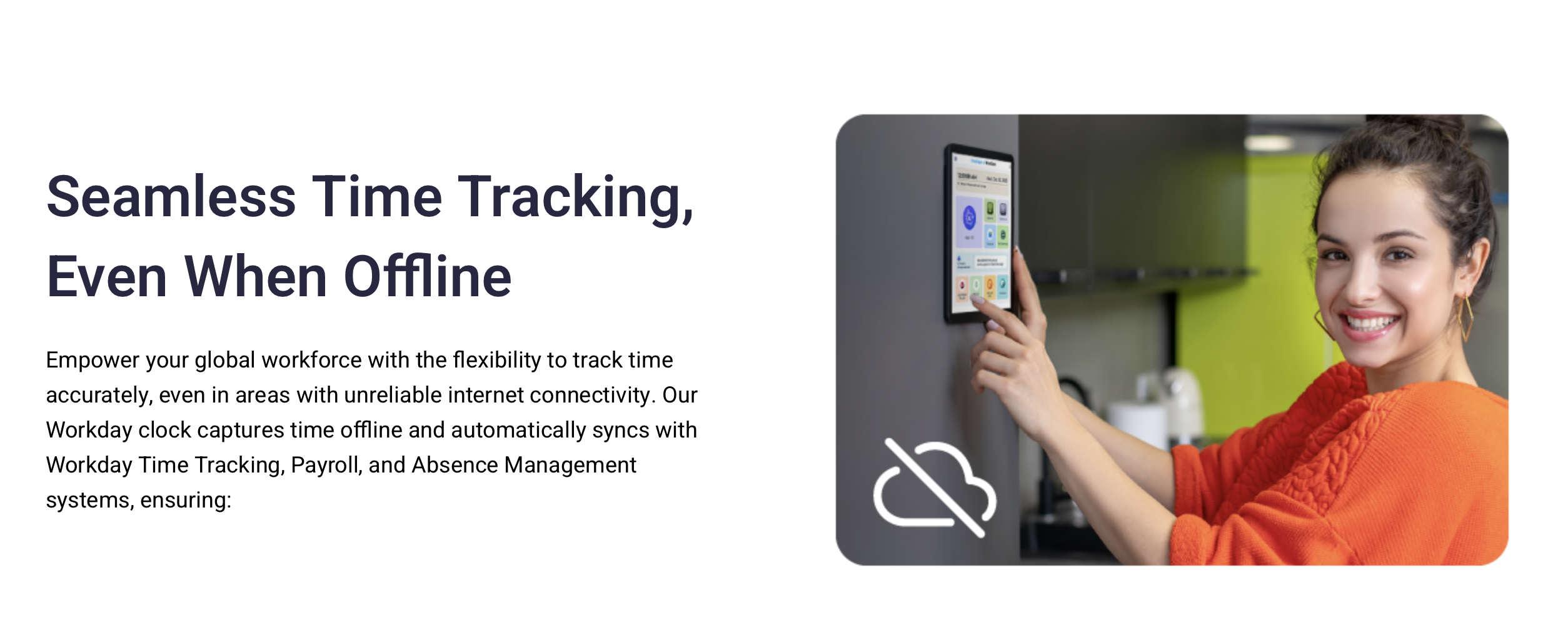One of the most important—yet frequently disregarded—aspects of payroll and human resources management for hourly workers is overtime compliance. Making sure that overtime rules are consistently followed becomes more difficult as many businesses expand and grow, particularly when utilizing big enterprise systems like Workday. Errors in overtime calculations can cost hourly businesses a lot of money, lead to legal issues, and even erode employee trust.
Thankfully, this issue has a clever and automated solution thanks to the development of AI-driven technologies like CloudApper AI TimeClock. Businesses can guarantee accurate time tracking and overtime compliance without the hassle of manual calculations and human error by integrating CloudApper AI TimeClock with Workday. This article will examine the difficulties of
The Complexities of Overtime Compliance in Workday
Large businesses frequently use Workday, a powerful platform for financial and human resource management, to handle everything from hiring and time tracking to payroll and benefits. Nevertheless, even with all of its features, HR departments may find it challenging to guarantee that overtime hours are precisely recorded and adhere to both federal and state regulations.
The United States has very specific overtime laws. The Fair Labor Standards Act (FLSA), for example, mandates that non-exempt hourly workers receive 1.5 times their regular rate of pay for any hours exceeding 40 in a workweek. The situation is made more difficult by extra regulations in some states. These differences can have major financial repercussions in addition to being a technical difficulty. Actually, the Department of Labor (DOL) in the United States
Some common overtime compliance issues in Workday include:
-
Inaccurate time tracking: If employees forget to clock in or out, it can lead to inaccurate reporting of hours worked, including overtime.
-
Manual calculations: While Workday automates some time tracking, the actual calculation of overtime pay often requires manual intervention, which can result in human errors.
-
Different state laws: Workday may not automatically factor in differences in overtime pay regulations across different states, leading to compliance mistakes.
Given these challenges, many businesses look for ways to automate and streamline overtime tracking, ensuring they stay compliant without the risk of costly errors.
How CloudApper AI TimeClock Solves Overtime Compliance Issues
CloudApper AI TimeClock seamlessly integrates with Workday, enhancing the time tracking process by adding AI-powered features to automate and ensure accurate overtime calculations. Below are the key features and benefits of using CloudApper AI TimeClock for overtime compliance:
1. Automated Overtime Calculations
One of the biggest pain points for HR professionals is accurately calculating overtime pay. CloudApper AI TimeClock does this automatically by considering the exact number of hours worked, factoring in breaks, shift changes, and applicable overtime laws. This ensures that workers are paid exactly what they are owed, eliminating the need for manual intervention.
Example: A retail business with employees working in different states could have very different overtime laws. For instance, California has specific overtime laws that require workers to receive overtime pay after 8 hours in a workday, while federal law only applies after 40 hours in a workweek. CloudApper AI TimeClock considers these nuances, providing accurate overtime pay based on state-specific laws.
2. Real-Time Overtime Tracking
CloudApper AI TimeClock tracks hours in real-time, allowing HR managers to monitor overtime accumulation as it happens. This proactive approach means businesses can spot potential overtime issues before they escalate, preventing employees from unknowingly working overtime and creating compliance risks.
Case Study: A manufacturing company using CloudApper AI TimeClock in conjunction with Workday noticed a significant reduction in overtime errors after the implementation of real-time tracking. Previously, employees working overtime would often have to wait until the end of the pay period to see the effects, sometimes leading to delayed adjustments and incorrect payments. Now, with real-time insights, managers can make on-the-fly adjustments, avoiding costly mistakes.
3. Seamless Workday Integration
Businesses benefit from a smooth integration that lowers system friction with CloudApper AI TimeClock, which enhances Workday’s already potent HR platform. Payroll, compliance, and reporting are all managed automatically by the AI TimeClock, which syncs all pertinent employee time and overtime data with Workday directly, lowering the possibility of human error.
CloudApper AI TimeClock, for instance, instantly detects two overtime hours if an employee works 42 hours in a week and makes sure they are paid at the appropriate overtime rate in accordance with the employee’s hourly rate and any applicable laws. Overall efficiency is increased and administrative work is reduced with this integrated approach.
4. Customizable Overtime Rules
Not all businesses follow the same overtime rules, especially if they operate across different regions. CloudApper AI TimeClock allows for customizable overtime rules that adapt to your organization’s specific needs. Whether your business operates in multiple states or countries, CloudApper AI TimeClock can accommodate the different overtime pay structures, ensuring full compliance with local laws.
5. Enhanced Reporting for Compliance Audits
CloudApper AI TimeClock provides HR departments with detailed, audit-ready reports that help them stay prepared for compliance audits. These reports provide an accurate history of employee work hours, overtime worked, and any adjustments made, making it easy to demonstrate compliance to regulatory bodies.
In the event of an audit, businesses can quickly access detailed reports for every employee’s time and overtime, eliminating the guesswork and stress associated with manual tracking.
The Business Benefits of Automating Overtime Compliance
The automation of overtime compliance using CloudApper AI TimeClock has numerous benefits for businesses beyond just compliance. Here are some key advantages:
1. Cost Savings: By ensuring that employees are paid correctly, businesses can avoid costly penalties and back wage claims due to overtime errors.
2. Increased Employee Trust: Transparent and accurate time tracking fosters trust between employees and employers. Workers are more likely to trust that they are being paid fairly when the system is automated and errors are minimized.
3. Time Efficiency: HR teams no longer need to manually check overtime hours, reducing administrative workloads and freeing up resources for other important tasks.
4. Improved Productivity: With automated systems, HR professionals can focus on strategic initiatives rather than getting bogged down with overtime-related issues, improving the overall productivity of the organization.
A Smarter Solution for Overtime Compliance
Businesses must give overtime compliance for hourly employees top priority in the complicated regulatory environment of today. Ensuring compliance with local, state, and federal laws, CloudApper AI TimeClock provides a complete solution that seamlessly integrates with Workday to automate the overtime tracking and payment process. In addition to lowering compliance risks, CloudApper AI TimeClock increases operational effectiveness and employee satisfaction by eliminating the human error involved in manual overtime computations.
Integrating CloudApper AI TimeClock into your Workday system is an intelligent, scalable, and affordable solution for companies that are having trouble managing overtime compliance. It guarantees compliance, saves time, and offers peace of mind.
Businesses can create a healthier, more productive workplace where both employers and employees can thrive by utilizing AI to solve the problems associated with managing overtime.

Darren Trumbler is a versatile content writer specializing in B2B technology, marketing strategies, and wellness. With a knack for breaking down complex topics into engaging, easy-to-understand narratives, Darren helps businesses communicate effectively with their audiences.
Over the years, Darren has crafted high-impact content for diverse industries, from tech startups to established enterprises, focusing on thought leadership articles, blog posts, and marketing collateral that drive results. Beyond his professional expertise, he is passionate about wellness and enjoys writing about strategies for achieving balance in work and life.
When he’s not creating compelling content, Darren can be found exploring the latest tech innovations, reading up on marketing trends, or advocating for a healthier lifestyle.
